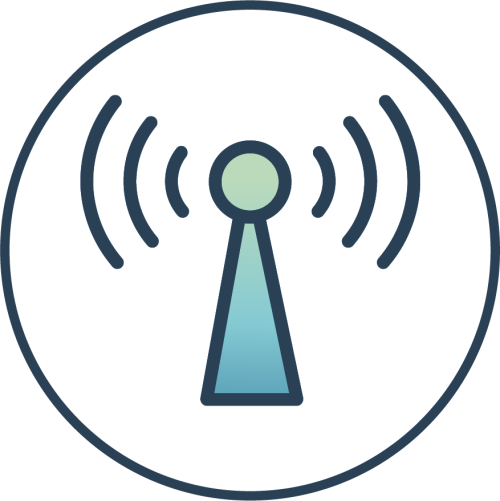As a building biologist, I’m often asked about hidden health hazards in the home, and one of the most common but least understood concerns is electromagnetic field (EMF) exposure. EMFs are generated by virtually all electronic devices, from your Wi-Fi router to your kitchen appliances, and though we can’t see or feel them, their presence can have a significant impact on our well-being. In this post, I’ll dive into the dangers of EMF exposure in your home and how you can reduce your risk.
What Are EMFs?
Electromagnetic fields (EMFs) are invisible areas of energy associated with the use of electrical power and various forms of natural and man-made lighting. They are typically classified into two types: low-frequency EMFs from things like power lines, electrical wiring, and household appliances, and high-frequency EMFs such as radiofrequency (RF) radiation from wireless devices like cell phones, Wi-Fi routers, and Bluetooth gadgets.
Why Should We Be Concerned?
As a building biologist, I believe it’s essential to consider the cumulative effects of EMF exposure, especially in our homes where we spend most of our time. Prolonged or chronic exposure to EMFs may lead to a variety of health concerns. Here are the top risks associated with excessive EMF exposure:
1. Disrupted Sleep Patterns
One of the most immediate and noticeable effects of high EMF exposure is poor sleep quality. EMFs can interfere with the production of melatonin, the hormone responsible for regulating sleep cycles. If you have a Wi-Fi router or several wireless devices in your bedroom, your sleep might be less restful, leading to fatigue, stress, and weakened immunity.
2. Increased Stress Levels
The body responds to EMF exposure by entering a state of stress. Studies show that EMF exposure can activate the body’s stress response, leading to an increase in cortisol levels, our main stress hormone. Over time, heightened cortisol levels can contribute to issues like anxiety, headaches, and even cardiovascular problems.
3. Potential Links to Cancer
Though more research is needed, some studies suggest a link between EMF exposure and an increased risk of developing certain types of cancers. The World Health Organization (WHO) has classified RF radiation as a possible carcinogen, meaning there is evidence that it could potentially contribute to cancer development, though definitive conclusions have yet to be reached.
4. Neurological Effects
Long-term EMF exposure has been associated with neurological symptoms such as brain fog, dizziness, difficulty concentrating, and memory problems. EMFs can interfere with the body’s bioelectrical signals, affecting how neurons communicate and disrupting normal brain function.
5. Electromagnetic Hypersensitivity (EHS)
Some people experience more severe and immediate reactions to EMF exposure, a condition known as electromagnetic hypersensitivity (EHS). Symptoms can range from headaches and skin rashes to heart palpitations and extreme fatigue. While not yet widely recognized by mainstream medicine, EHS is increasingly being reported by those who spend a lot of time around high levels of EMFs.
Where Are EMFs Coming From in Your Home?
EMF sources in the home are numerous, and even if you don’t live near a cell tower or high-voltage power line, you are likely still surrounded by EMFs. Common sources include:
- Wi-Fi routers
- Smart meters
- Cell phones and tablets
- Laptops and desktop computers
- Bluetooth devices
- Microwaves and other kitchen appliances
- Televisions and gaming consoles
- Electrical wiring and outlets
How to Reduce EMF Exposure
The good news is that you can take steps to reduce your EMF exposure at home. As a building biologist, I recommend the following strategies:
1. Create a Low-EMF Sleeping Space
Your bedroom should be a sanctuary for rest and healing, free from EMF interference. Turn off your Wi-Fi router at night, keep electronic devices like cell phones out of the bedroom, and avoid using electric blankets or heating pads while you sleep.
2. Switch to Hardwired Connections
Whenever possible, opt for wired internet and landline phones instead of relying on wireless connections. Ethernet cables provide a stable connection without the constant RF radiation emitted by Wi-Fi routers and mobile phones.
3. Limit Device Use
While it may not be practical to eliminate device use altogether, try to minimize your exposure by reducing screen time, using speakerphone or wired headsets instead of holding your phone to your head, and avoiding prolonged laptop use on your lap.
4. Shielding Solutions
In some cases, shielding products such as EMF-blocking paints, curtains, or mats can be used to reduce exposure from external sources like cell towers or high-voltage power lines.
5. Grounding Your Environment
One often overlooked solution is grounding, or earthing. This involves direct contact with the earth’s surface, either by walking barefoot outside or using grounding mats indoors. Grounding helps balance out the positive charge buildup in your body from constant EMF exposure.
As our homes become increasingly connected, EMF exposure is an issue we can’t afford to ignore. While more research is needed to fully understand all the risks, taking steps to reduce EMF exposure is a wise precaution. By being mindful of where and how you use electronics, and by following the principles of building biology, you can create a healthier, safer environment for you and your family.
Take action today to reduce EMF exposure in your home—it’s a small change that can make a big difference in your well-being.








Leave a Reply